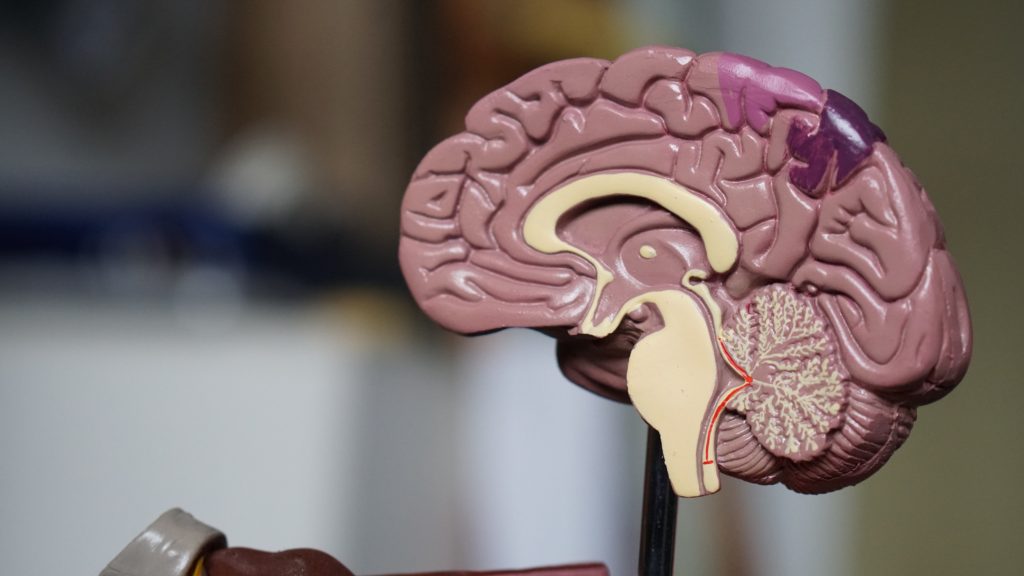Puzzler Think

I have a calculator that can display ten digits. How many different ten-digit numbers can I type using just the 0-9 keys once each, and moving from one keypress to the next using the knight’s move in chess? (In chess, the knight move in an L-shape – one square up and two across, two squares down and one across, two squares up and one across, and other like combinations)
Want a hint? Contact me at aditya@thepuzzlr.com
Answers To Last Week’s Puzzlers
Click here to go to last week’s Puzzlers
Puzzler Quik
Last week’s Puzzler Quik was a classical problem!
Kudos to Meenakshi for solving the problem.
The solution to the Puzzler Quik is pretty short but the idea is deep.
Below is a solution presented by Jason Li(slightly edited by me).
Each student changes the state of lockers, whether it’s from a closed state to an open state or an open state to a closed state. Each student only changes the lockers that are multiples(of the student number. For example, student 5 changes lockers 5, 10, 15, 20, 25, and so on. This means that the amount of times a locker is changed is equal to the number of factors it has. If a locker ends up in an open state, it has an odd number of factors, and if it ends up in a closed state, it has an even number of factors. All the lockers open are therefore the ones with an odd number of factors. The only numbers that have an odd number of factors are perfect squares. Therefore, the lockers in the perfect square positions are open. This makes our answer $$1,4,9,16,25,36,49,64,81,100$$
Puzzler Think
There are many ways to do this problem, but the simplest way is the one below:
Kudos to Eddie for solving this problem. The solution presented here is his own and a very impressive one indeed.
First, let the number be D1D2D3 … D9, where Di is the ith digit from the left. Thus, D1 is a multiple of 1, D1D2 is a multiple of 2, and so on, until D1D2 … D9 is a multiple of 9.
Now, let us attempt to satisfy to satisfy all nine of these restrictions (which we shall call, respectively, the 1-restriction when referring to D1 being a multiple of 1, the 2-restriction when referring to D1D2 being a multiple of 2, and so on) by way of eleven “clues”:
Clue 1: Any number is a multiple of 1. Therefore, the 1-restriction is automatically satisfied.
Clue 2: The sum D1 + D2 + … + D9 is always 45 (since the nine numbers are, as given, the numbers 1 through 9 in some order; 1 + 2 + 3 + … + 9 = 45). Thus, the sum of the digits of D1D2D3 … D9 is always 45, which is a multiple of 9. Therefore, since the sum of the digits of D1D2D3 … D9 is always a multiple of 9, D1D2D3 … D9 is always a multiple of 9 (because of the divisibility rule of 9). Hence, the 9-restriction is also automatically satisfied.
Clue 3: By the 5-restriction, D1D2D3D4D5 must be a multiple of 5. Therefore, D5 must be 0 or 5. However, because by the problem statement, none of the digits can be 0, D5 must be 5.
Clue 4: By the 2-, 4-, 6-, and 8-restrictions, the numbers D1D2, D1D2D3D4, D1D2D3D4D5D6, and D1D2 … D8 are all even. Therefore, D2, D4, D6, and D8 are equal to 2, 4, 6, and 8, in some order.
Clue 5: Since D2, D4, D6, and D8 are equal to 2, 4, 6, and 8 in some order (from Clue 4) and D5 must be 5 (from Clue 3), D1, D3, D7, and D9 are equal to 1, 3, 7, and 9, in some order.
Clue 6: By the 4-restriction, D1D2D3D4 is a multiple of 4. Therefore, because of the divisibility rule of 4, D3D4 must also be a multiple of 4. Furthermore, from the implications of Clues 4 and 5 that D3 can be equal to 1/3/7/9 (i.e. 1, 3, 7, or 9) and D4 can be equal to 2/4/6/8, guessing-and-checking a little yields: The ordered pair (D3,D4) can be (1,2), (1,6), (3,2), (3,6), (7,2), (7,6), (9,2), (9,6). In other words, D3 can still be 1/3/7/9 while D4 must be 2/6.
Clue 7: By the 6-restriction, D1D2D3D4D5D6 is a multiple of 6, so it is also a multiple of 3. Therefore, the sum D1 + D2 + … + D6 must be a multiple of 3 (because of the divisibility rule of 3). However, by the 3-restriction, D1D2D3 must be a multiple of 3 as well, so D1 + D2 + D3 must be a multiple of 3. Hence, since both D1 + D2 + … + D6 and D1 + D2 + D3 must be multiples of 3, D4 + D5 + D6 must be a multiple of 3 too. Further note that D5 = 5 from Clue 3. Therefore, since D4 = 2/6 (i.e. 2 or 6) from Clue 6 and D6 must be even (from Clue 4), guessing-and-checking a little with this information, including that D4 + D5 + D6 must be a multiple of 3, gives us: (D4,D5,D6) must be either (2,5,8) or (6,5,4).
Clue 8: By the 8-restriction, D1D2 … D8 is a multiple of 8, so from the divisibility rule of 8, D6D7D8 must be a multiple of 8. Rewriting, we see that 100 * D6 + D7D8 must be a multiple of 8. However, since D6 is either 8 or 4 (see Clue 7 above), 100 * D6 is 800 or 400, both of which are multiples of 8. Thus, since 100 * D6 must be a multiple of 8, from the conclusion reached above, D7D8 must be a multiple of 8. Considering Clues 4-7 and guessing-and-checking gives: If (D4,D5,D6) is (2,5,8), then (D7,D8) must be (1,6) or (9,6) while if (D4,D5,D6) is (6,5,4), then (D7,D8) must be (3,2) or (7,2).
BREAK 1: Note that we have, so far, satisfied the 1-, 4-, 5-, 6-, 8-, and 9-restrictions with the deductions above. Those deductions are: (D3, D4, D5, D6, D7, D8) can be (1/3/7/9, 2, 5, 8, 1/9, 6) or (1/3/7/9, 6, 5, 4, 3/7, 2).
Clue 9: Because D2 must be even (see Clue 4 and also note the 2-restriction), if (D3, D4, D5, D6, D7, D8) is (1/3/7/9, 2, 5, 8, 1/9, 6), D2 must be 4. On the other hand, if (D3, D4, D5, D6, D7, D8) is (1/3/7/9, 6, 5, 4, 3/7, 2), D2 must be 8.
Clue 10: By the 3-restriction, D1D2D3 must be a multiple of 3. Therefore, from the divisibility rule of 3, D1 + D2 + D3 must also be a multiple of 3. Guessing and checking with the possibilities we have gives, combined with BREAK 1 and Clue 9: (D1, D2, D3, D4, D5, D6, D7, D8) can be (1, 4, 7, 2, 5, 8, 1/9, 6), (7, 4, 1, 2, 5, 8, 1/9, 6), (1, 8, 3, 6, 5, 4, 7, 2), (1, 8, 9, 6, 5, 4, 3/7, 2), (3, 8, 1, 6, 5, 4, 3/7, 2), (3, 8, 7, 6, 5, 4, 3, 2), (7, 8, 3, 6, 5, 4, 7, 2), (7, 8, 9, 6, 5, 4, 3/7, 2), (9, 8, 1, 6, 5, 4, 3/7, 2), or (9, 8, 7, 6, 5, 4, 3, 2). From these ordered “octuplets”, it is then possible to deduce D9 from each one (which we shall omit here for sake of space).
BREAK 2: We have now satisfied the 1-, 2-, 3-, 4-, 5-, 6-, 8-, and 9-restrictions, with only the 7-restriction left, which we shall resolve with the final clue.
Clue 11: By the 7-restriction, D1D2 … D7 must be a multiple of 7. We save the 7-restriction for last since there really is no good divisibility rule for 7. Thus, given the ordered “octuplets” of Clue 10, we can check whether or not each of those ordered lists of numbers produces a D1D2 … D7 that is divisible by 7. After a lot of division, we then deduce that: Only the “octuplet” (D1,D2,D3,D4,D5,D6,D7,D8) = (3,8,1,6,5,4,7,2) [and therefore D9 = 9] yields a D1D2 … D7 divisible by 7. Combining all eleven clues above, we see D1, D2, D3, …, D9 are, respectively, 3, 8, 1, 6, 5, 4, 7, 2, and 9. Hence, the desired number is 381,654,729.
Have any questions? Want to send me a puzzle to possibly be the next puzzler? Email me at aditya@thepuzzlr.com


